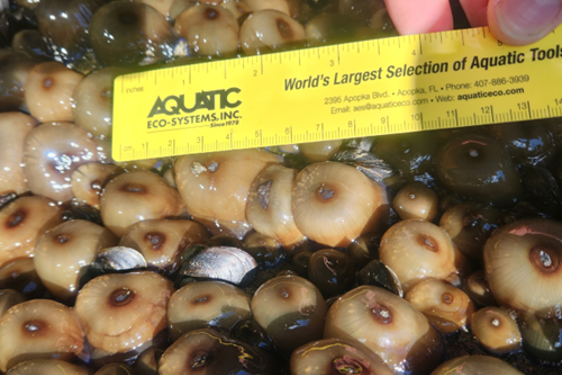New invasive species clings to Jersey Shore: European sea anemones
Feb. 26, 2025, 6:30 a.m.
The beadlet anemone has established itself on man-made jetties that protect the coastlines of a half-dozen beaches from Long Branch to Barnegat Bay on the Jersey Shore.

A new invasive species has been discovered on the Jersey Shore: an anemone from across the Atlantic Ocean that scientists describe as a greenish blue snot ball.
The Actinia equina, also known as the beadlet anemone, has established itself on artificial jetties that protect the coastlines of a half-dozen beaches from Long Branch to Barnegat Bay on the Jersey Shore.
“ Ecosystems are actually very complicated things,” Monmouth University marine biology professor Jason Adolph said. “ When you find an invasive species like this, all of a sudden, or an introduced species that's potentially invasive and destructive, we want to document that and learn about it.”
Adolph said he first began noticing unfamiliar “anomalous squishy blobs” on the jetties in 2021. Other sightings along the Jersey Shore were also documented in the citizen science app iNaturalist. In March of last year, Adolph and one of his students, Diederik Boonman, used databases and DNA samples to confirm the inch-long, tentacled sea creature was a new invasive species. Their findings were published earlier this month by Cambridge University Press.
The next step is to map beadlet anemone sightings. Researchers will then try to determine what effect the anemones could have on the Jersey Shore’s ecosystem. The anemones are already competing for space with mussels and barnacles in the crevices between rocks. Anemones reproduce asexually by cloning themselves, literally splitting themselves in half.
“They're super clonal, so they're going to exclude native species that are trying to recruit to the same substrate,” said Benjamin Titus, a marine biology professor at the University of Alabama.

Researchers have already noticed the newly arrived anemones are behaving differently in their Garden State habitat. In Europe, the tentacled creatures are typically found isolated on rocks. But on the Jersey Shore, they’re squeezed together in clusters of around 10 or more, which contributes further to the displacement of native species.
“There are no predators knocking down the population numbers, and so they grow in these aggregate tiers as opposed to in their native area where there are predators,” Adolph said.
The researchers suspect that the anemones traveled here as stowaways in the ballast water of ships traveling to the Port of New York and New Jersey. The anemones can release clones that float in the water until they find a suitable surface to cling to.
”The most likely source of them getting here is it hitched a ride on a boat and found suitable rocky habitat in these groins that we build on our sandy shores here for sand retention,” Adolph said.
In England, beadlet anemones exist in a wide variety of colors — brown, green, red and yellow. But on the Jersey Shore, they come in only one color — green. Adolph said the reason is likely a result of their asexual production.
“Either they're all clones of each other, basically the same individual that's just copying itself and putting itself in other places, or we have a small population of the green anemones that came over, and they're creating a new population of only that color of anemones,” Adolph said.
Beadlet anemones are aggressive predators that feast on plankton, fish, crabs and mollusks. Their tentacles retract when they’re out of water to prevent them from drying out.
Currently, Boonman and Adolph are mapping the locations of beadlet anemones to track their spread.
“If they're not behaving the same as in their native environment, we can't apply all of the same knowledge and the same information from England to here,” Boonman said.
NY's invasive lanternflies are coating the region with sweet, destructive poop